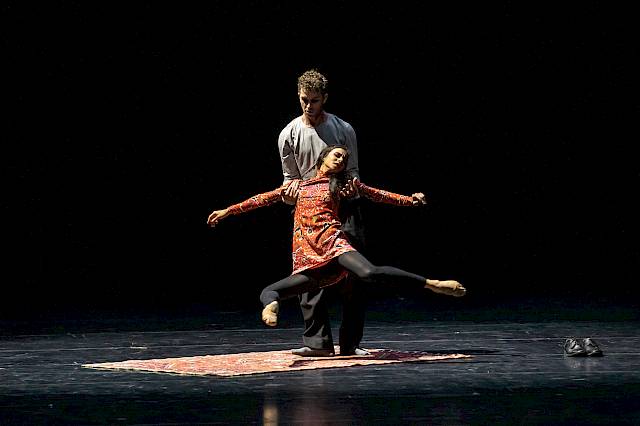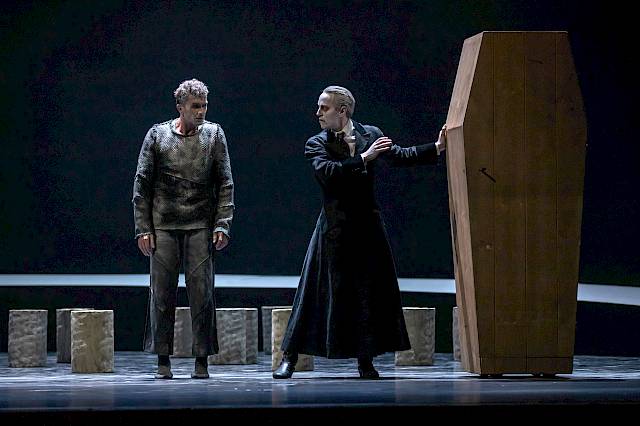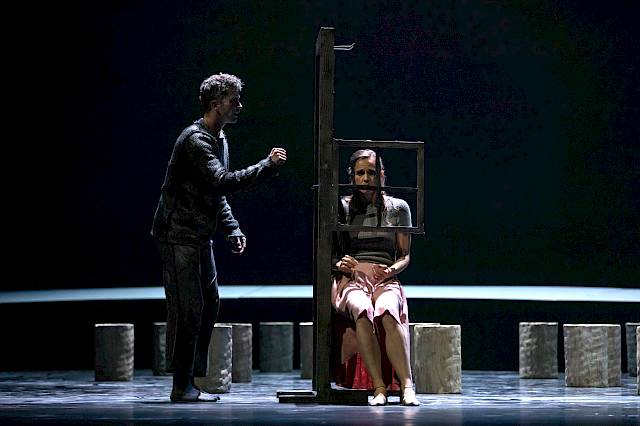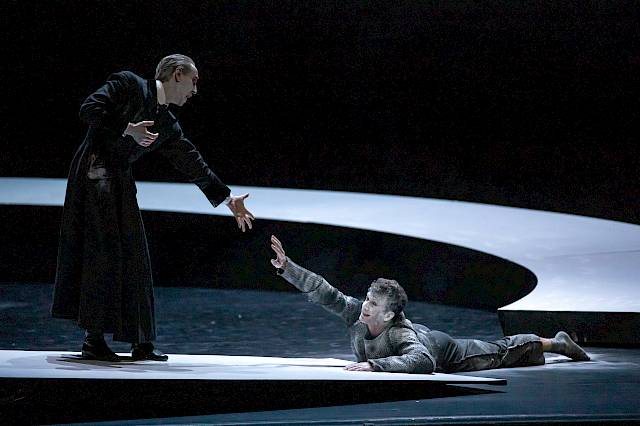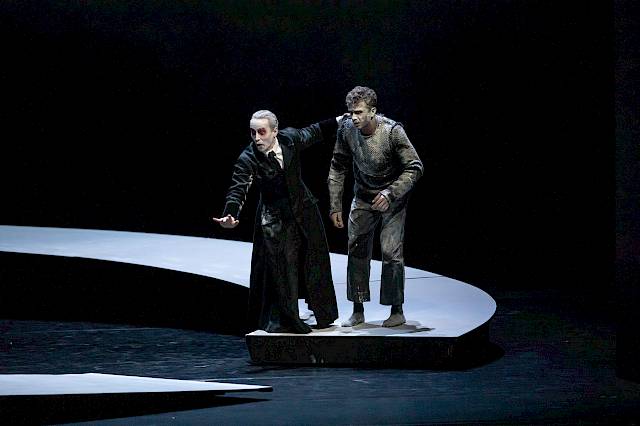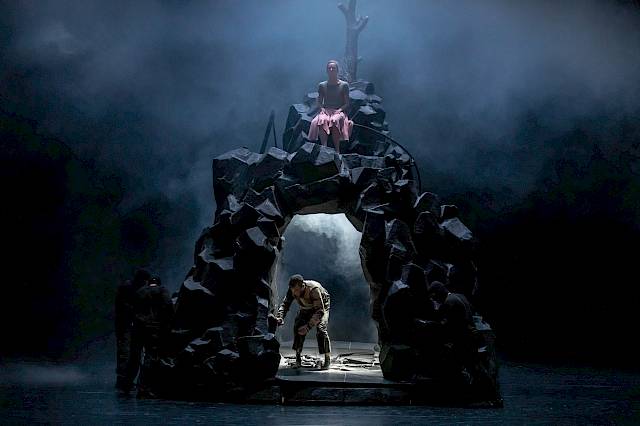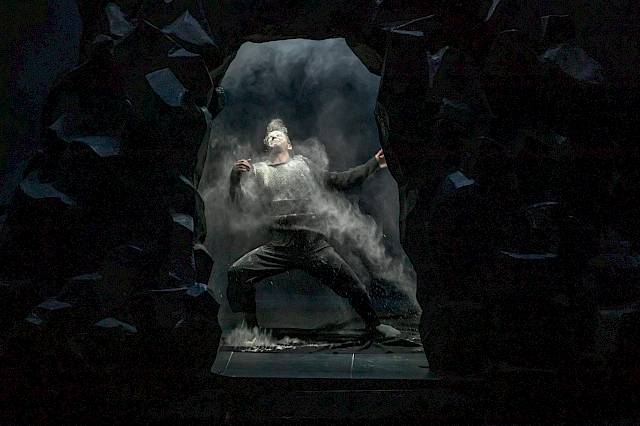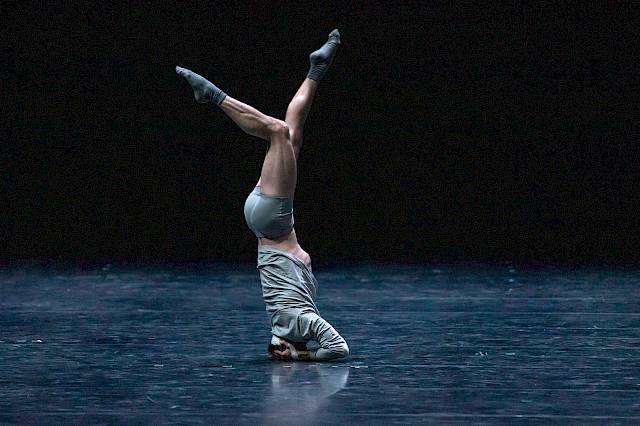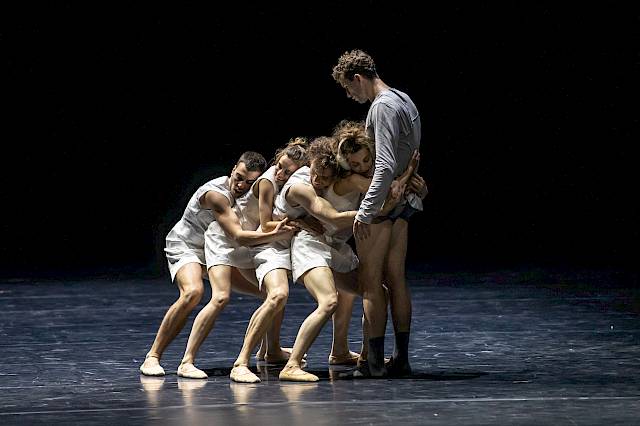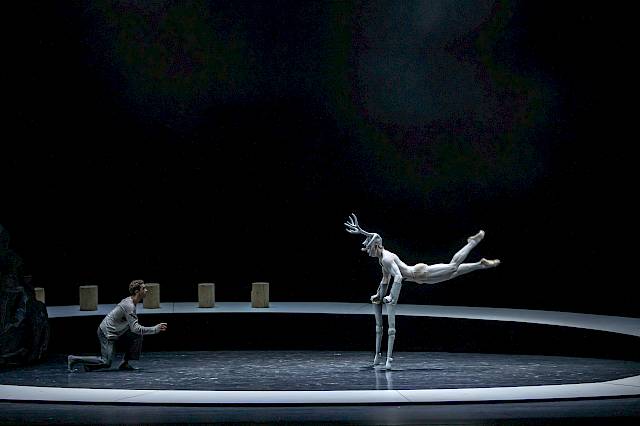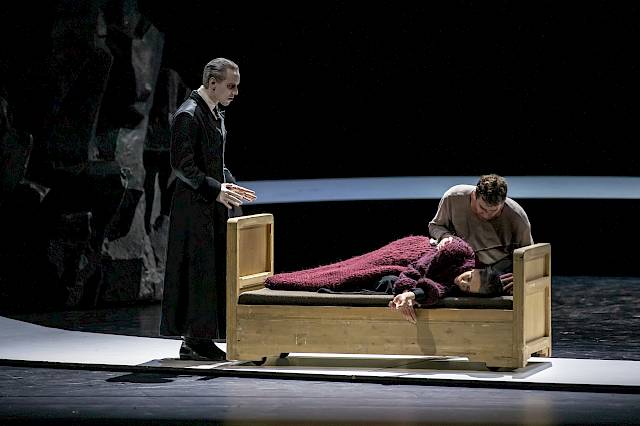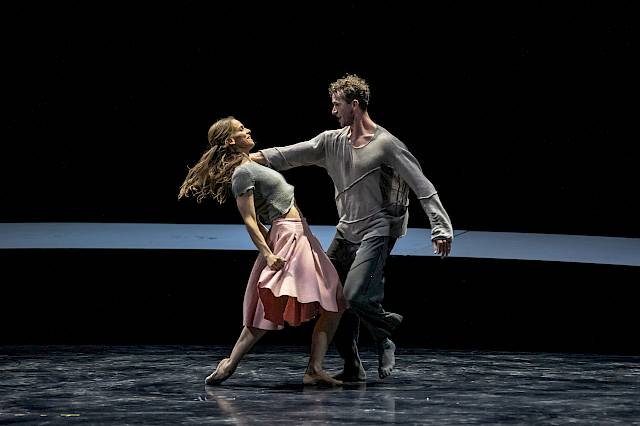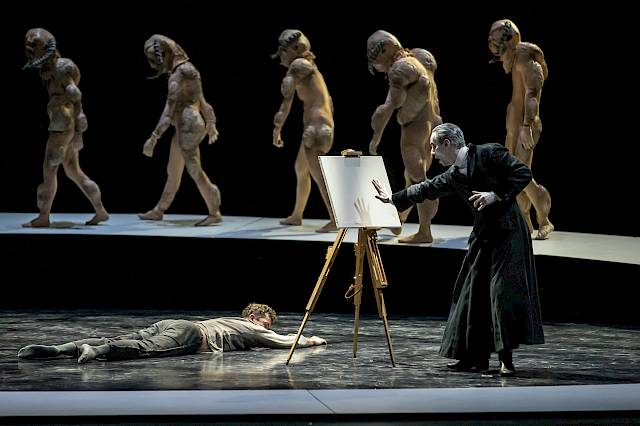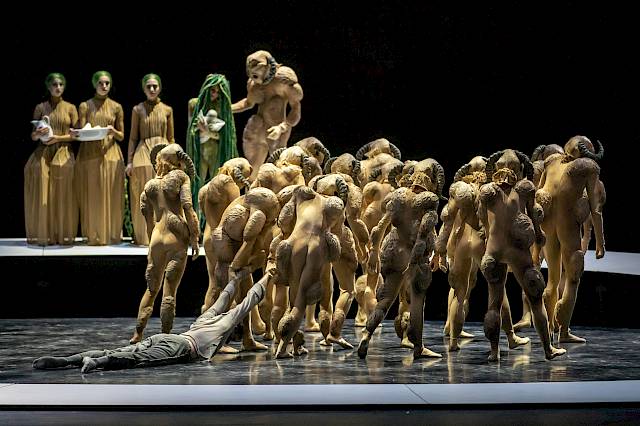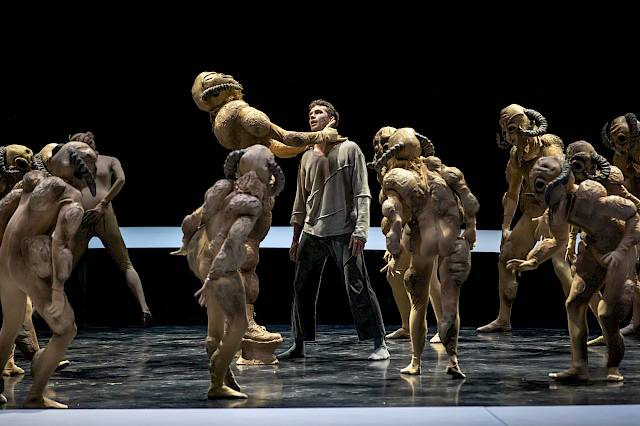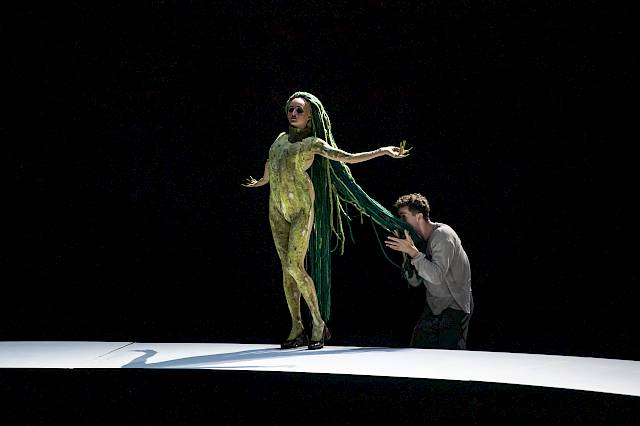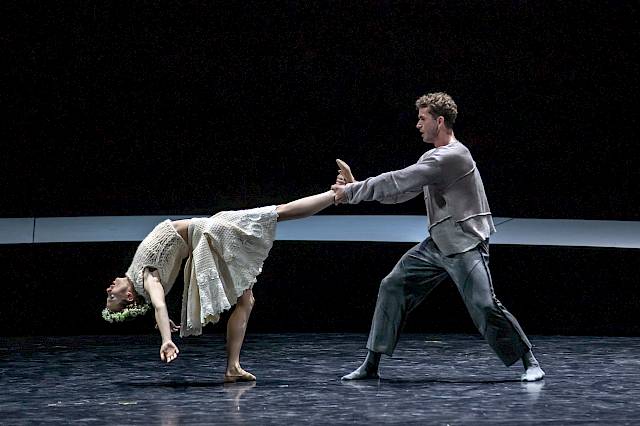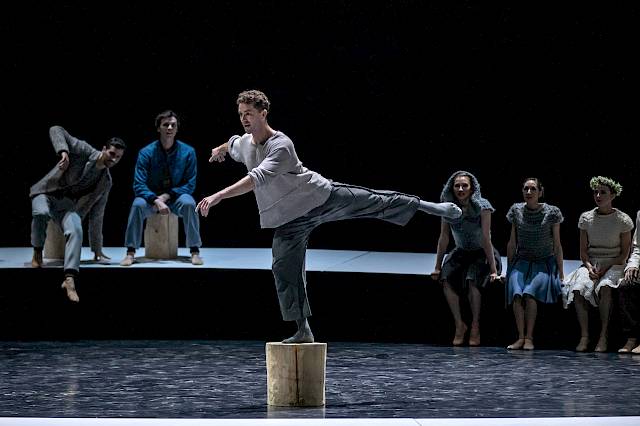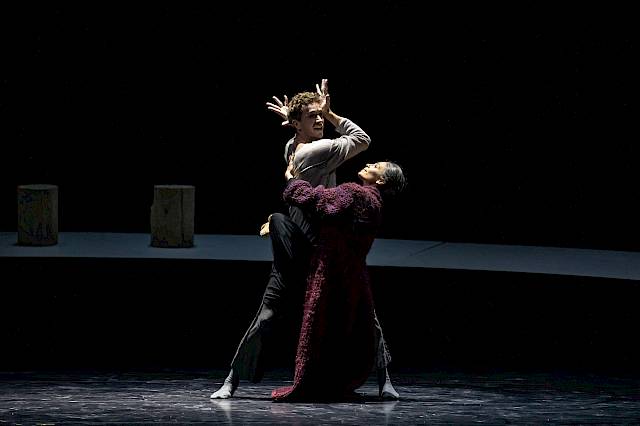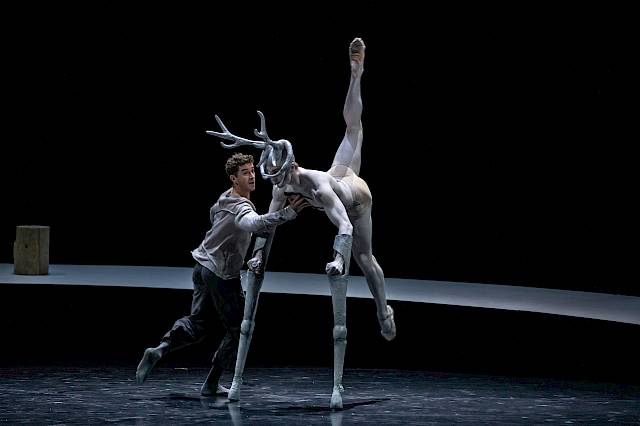Peer Gynt
Ballet by Edward Clug
After the drama of the same name by Henrik Ibsen
Music by Edvard Grieg (1843-1907)
Duration approx. 2 H. 10 Min. incl. intermission after approx. 50 Min. Introduction 45 min before the performance.
Introductory matinee on May 15 2022
Partner Ballett Zürich 
Past performances
May 2022
June 2022
Good to know
From Friday, 1 April, the mandatory wearing of masks will no longer be required for the public at all performances and events at the Opernhaus Zürich. You can find more information here.
Peer Gynt
Abstract
Peer Gynt
Henrik Ibsen found the inspiration for his 1867 drama Peer Gynt in Peter Christen Asbjørnsen’s Norwegian closet drama of the same name. Its success soon led the playwright to create a stage version, and he commissioned Edvard Grieg to compose the incidental music. The play had its premiere in Christiania, today's Oslo, in 1876.
Having already made a name for himself here with his spectacular readings of Le Sacre du printemps and Faust – Das Ballett, Slovenian choreographer Edward Clug makes his return to Zurich. Clug’s Peer Gynt, premiered in 2015 at the Slovenian National Ballet in Maribor under his direction, is a visually stunning, enigmatic fantasy spectacle – a modern narrative ballet inspired by surrealism, absurdity, and irony. Clug combines Ibsen and Grieg’s versions to create a special dance experience. He uses the two well-known Peer Gynt Suites, complementing them with Grieg's String Quartet in G minor op. 27, the Piano Concerto in A minor op. 16, and selections from the Lyric Pieces.
Using striking scenes, Clug tells the story of Peer Gynt, the farmer's son, who cheats his way through the world with tall tales in an effort to escape reality. In Peer’s fantasy world, his father’s run-down dwelling is a glittering palace, and he romanticizes his own escapades, turning them into heroic deeds. His quest for love and adventure takes him not only to a world of trolls and demons, but also to the Orient and a madhouse. When Peer Gynt finally returns home, he must fight for his soul, which he is only allowed to keep thanks to his beloved Solveig.
Biographies
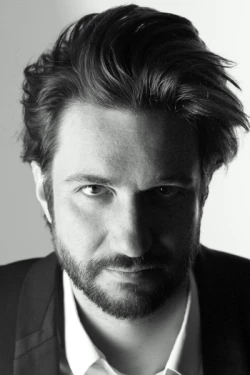
Victorien Vanoosten,
Victorien Vanoosten
Victorien Vanoosten ist Pianist und Dirigent und seit 2019 Künstlerischer Leiter des Ensemble Symphonique Neuchâtel. Daneben führt er seine Arbeit als Chefdirigent des Orchestre Symphonique du Pays Basque im französischen Bayonne sowie bei DEMOS fort, einem sozialen Orchesterprojekt, vergleichbar mit «El Sistema», das im Auftrag der Philharmonie de Paris entstanden ist. Victorien Vanoosten, der im französischen Lille aufwuchs, studierte Klavier bei Michel Béroff am Pariser Konservatorium sowie Dirigieren in Paris und Helsinki bei Esa-Pekka-Salonen, Alain Altinoglu, Leif Segerstam, David Zinman, Peter Eötvös und Pierre Boulez. In der Saison 2018/19 war er als Assistent von Daniel Barenboim an der Staatsoper Unter den Linden in Berlin tätig, wo er u.a. Médéé und Les Pêcheurs de perles dirigierte. Zuvor assistierte er bereits seit 2014 dem Musikdirektor Lawrence Foster der Opéra de Marseille und dirigierte dort Le Portrait de Manon, Madame Chrysanthème und Hérodiade. In der Spielzeit 2019/20 leitet er Sinfoniekonzerte des Orchestre National de l’Île-de-France in der Pariser Philharmonie, ebenso Neuproduktionen von Carmen an der Opéra de Marseille und von La traviata im französischen St. Etienne. Im Sommer 2021 dirigierte er Les Pêcheurs de perles an der Staatsoper Berlin und unter dem Titel La folle soirée de l’Opéra drei Konzerte im Théâtre des Champs-Elysées in Paris. Als Pianist war er zuletzt mit Ravels Klavierkonzert in G-Dur – im Play/Conduct-Modus – zu erleben. 2015 legte er seine erste Solo-CD mit eigenen Transkriptionen von Orchesterwerken von Debussy, Strawinsky, Duruflé, Saint-Saëns und Ravel vor.
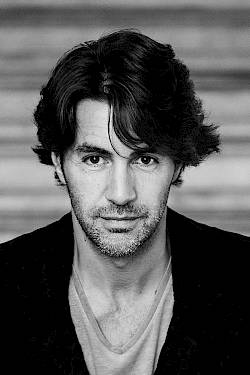
Edward Clug,
Edward Clug
Edward Clug vollendete seine Ballettausbildung 1991 an der Nationalen Ballettschule in Cluj-Napoca (Rumänien). Im selben Jahr wurde er als Solist an das Slowenische Nationaltheater (SNG) in Maribor engagiert. 2003 wurde er am selben Theater Ballettdirektor und führte die Compagnie auf neue, unverkennbare Wege. Mit seinem unverwechselbaren choreografischen Stil zog Edward Clug die Aufmerksamkeit eines internationalen Publikums auf sich. Gleichzeitig gelang es ihm, das Mariborer Ensemble mit Gastspielen in ganz Europa, Asien, den USA und Kanada in der internationalen Tanzszene zu etablieren. Seit mehreren Jahren ist Edward Clug dem Stuttgarter Ballett und dem Ballett Zürich verbunden. In Zürich waren u.a. Faust – Das Ballett und Le Sacre du printemps zu sehen. Ausserdem entwickelte sich eine enge Beziehung zum Nederlands Dans Theater. Neue Stücke entstanden ferner für das Royal Ballet of Flanders, das Ballett der Wiener Staatsoper, das Nationalballett Lissabon, das Kroatische Nationalballett, das Rumänische Nationalballett Bukarest, die Bitef Dance Company, das Ukrainische Nationalballett Kiew, das Staatsballett Nowosibirsk, die Station Zuid Company, Graz Tanz, das Ballett des Theaters am Gärtnerplatz München, das Hessische Staatsballett Wiesbaden, das Ballett Augsburg, das Aalto Ballett Essen, das Ballett Dortmund und das West Australian Ballet. Edward Clug erhielt zahlreiche nationale und internationale Preise. Für Quattro wurde er 2010 in Moskau für den Kunstpreis «Goldene Maske» nominiert. Ausserdem wurde er mit den höchsten slowenischen Kulturpreisen, dem Preis der Prešern Foundation (2005) und der Glazer Charter (2008), ausgezeichnet. 2017 wurde seine Choreografie Handman (NDT 2) für den «Benois de la Danse» nominiert. Sein Ballett Peer Gynt wurde vom Wiener Staatsballett ins Repertoire übernommen. Am Moskauer Bolschoitheater choreografierte er 2018 Petruschka, mit der Starballerina Diana Vishneva realisierte er in Miami das Projekt Sleeping Beauty Dreams.

Marko Japelj,
Marko Japelj
Marko Japelj stammt aus Maribor (Slowenien). Er studierte Architektur in Ljubljana. 1986 entstand sein erstes Bühnenbild für Hedda Gabler an der Theaterakademie Ljubljana. Mittlerweile realisierte er fast 200 Bühnenbilder für Drama und Musiktheater. Viele davon wurden ausgezeichnet. Als Gastprofessor leitete er drei Semester die Meisterklasse für Film und Bühnengestaltung an der Hochschule für angewandte Kunst in Wien. Er arbeitete mit zahlreichen Theatern in Slowenien und Europa, u.a. für die Opernhäuser in Bukarest, Riga, Metz, Bratislava sowie die Wiener Staatsoper, die Nationaltheater in Zagreb, Rijeka und Belgrad, das Nederlands Dans Theater, das Ballet Vlaanderen in Antwerpen, das Aalto Theater Essen und die Theater Augsburg, Dortmund und Wuppertal. Für Edward Clug realisierte er die Bühnenbilder zu Tango, Lacrimas, Radio & Juliet, Prêt-à-porter, Watching others, The Architecture of Silence, Hill Harper’s Dream, Le Sacre du printemps, Six Antique Epigraphs, Les Noces, Chamber Minds, Peer Gynt, Hora und Proof. Für Filipe Portugal und das Ballett Zürich entstand das Bühnenbild zu disTANZ.
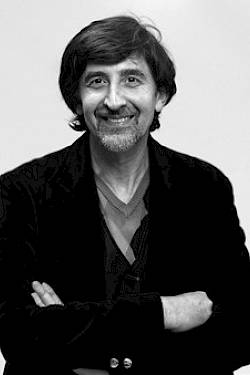
Leo Kulaš,
Leo Kulaš
Leo Kulaš ist Bühnen- und Kostümbildner. Er studierte an der Akademie für Angewandte Kunst in Belgrad. Im ehemaligen Jugoslawien schuf er die Kostüme für über 150 Theater-, Opern- und Ballettproduktionen. Mit Roberto Ciulli arbeitete er am Theater an der Ruhr und an Paolo Magellis «Teatro Metastasio della Toscana». Am Slowenischen Mladinsko Theatre und am Slowenischen Nationaltheater Maribor arbeitete er mit der Kostümbildnerin Svetlana Visintin zusammen. Für La divina commedia am Slowenischen Nationaltheater Maribor wurde er mit dem «Maribor Theatre Festival Award» und dem «Prešeren Fund Award» ausgezeichnet, 2008 erhielt er den «Maribor Theatre Festival Award» für Das Käthchen von Heilbronn in Ljubljana. Auch ausserhalb Sloweniens hat Leo Kulaš mit namhaften Regisseuren zusammengearbeitet. Seine Arbeiten waren u.a. am Theater Dortmund, am Thalia Theater Hamburg, an der Staatsoper Hannover, an der Oper Sofia, am Landestheater Linz, an der Wiener Staatsoper, an der Lettische Nationaloper in Riga und am Moskauer Bolschoitheater zu sehen. Er schuf die Kostüme für Edward Clugs Ballette Tango, Lacrimas, Radio &Juliet, Prêt-à-porter, Watching Others, Sketches und The Architecture of Silence, Hill Harper’s Dream, Le Sacre du printemps, Six Antique Epigraphs, Les Noces, Chamber Minds und Peer Gynt. Ausserdem ist er als Kostümbildner für Film und Fernsehen tätig. Am Theater St. Gallen entwarf er die Kostüme für das Musical Flashdance.
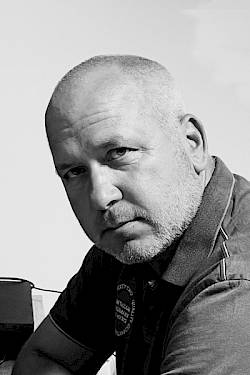
Tomaž Premzl,
Tomaž Premzl
Tomaž Premzl studierte Multimedia Production an der Academia in Maribor und arbeitet seit 1996 als Lichtdesigner und -techniker am Slowenischen Nationaltheater Maribor. Als Lichtdesigner zeichnet er dort für zahlreiche Produktionen im Bereich des klassischen und modernen Tanzes verantwortlich, darunter Schwanensee, Terror, Sladko suite, Paquita, Nychtemeron, Home, The Golden Age, Hommage à Stravinsky, Le Sacre du printemps, Faun, Stabat Mater und Carmina burana. Als langjähriges Mitglied des Teams von Edward Clug ist er international in zahlreichen bedeutenden Theatern tätig, u.a. auch beim Jacob‘s Pillow Dance Festival, The Stars of White Nights Festival, Festival of Firsts, Singapore International Arts Festival, Festival de danse à Biarritz, Tel Aviv International Dance Festival, Sintra Festival, Festival des Arts de Saint-Sauveur, Seoul International Dance Festival, Dance Open Festival in St. Petersburg sowie am Teatro alla Scala und Piccolo Teatro di Milano, am Lettischen Nationaltheater Riga und am Staatlichen Opern- und Balletttheater Nowosibirsk. Tourneen führten ihn auch durch die Niederlande, Italien, Slowenien, Kroatien, Serbien, Bosnien und Herzegowina, Montenegro, Mazedonien, den Kosovo und die USA. 2014 gestaltete er das Lichtdesign beim Statehood Day am Kongressplatz in Ljubljana.

Janko Kastelic,
Janko Kastelic
Janko Kastelic ist ein kanadisch-slowenischer Dirigent, Chorleiter, Pianist und Organist. Er begann seine musikalische Ausbildung in Kanada am Royal/Western Conservatory of Music und der St. Michael‘s Choir School. Er hat einen Abschluss in Dirigieren, Komposition und Musiktheorie von der Universität Toronto und setzte sein Studium an der Hochschule für Musik und Darstellende Kunst in Wien fort. Seit 2017 ist er Chordirektor am Opernhaus Zürich. Er war einer der Kapellmeister der Wiener Hofmusikkapelle, Studienleiter des JET-Programms für junge Sänger am Theater an der Wien und Assistent bei den Bayreuther Festspielen sowie Gastchordirektor an der Hamburgischen Staatsoper. Zu den Positionen, die er im Lauf seiner Karriere bekleidet hat, gehört auch die Stelle des Generalmusikdirektors und Operndirektors am Slowenischen Nationaltheater Maribor, des Zweiten Chordirektors an der Wiener Staatsoper sowie des Korrepetitors an der Opéra National de Paris. Er war Assistenzprofessor an der Universität Ljubljana und Mentor an der Musik und Kunst Privatuniversität der Stadt Wien. Seine künstlerischen Leistungen sind dokumentiert auf mehreren Live-Aufnahmen, darunter Tschaikowskis Pique Dame und Schönbergs Moses und Aron. Er arrangierte und dirigierte auch Werke für die Feierlichkeiten zum Mozartjahr 2006. Zu seinen Arbeiten beim Klangbogen-Festival in Wien gehört die europäische Erstaufführung von Blochs Macbeth. Janko Kastelic ist auch ein engagierter Pädagoge, der sich der Förderung der nächsten Generation von Musikerinnen und Musikern verschrieben hat.
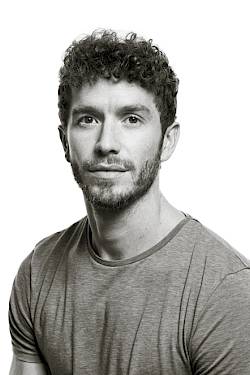
William Moore,
William Moore
William Moore is British and studied at the Royal Ballet School in London. He has won prizes at international ballet competitions. He has belonged to the Stuttgart Ballet since 2005 and was appointed as principal dancer there in 2010. Important roles were Siegfried in Schwanensee, Lensky in Onegin and Lucentio in Der Widerspenstigen Zähmung (all by John Cranko), Armand in Neumeier’s Kameliendame, Leonce in Christian Spuck’s Leonce und Lena, the title role in Marco Goecke’s Orlando, Albrecht in Giselle by Anderson/Savina, Colas in Ashton’s La fille mal gardée. In 2012 William Moore was awarded the German Theater Prize «Der Faust». Since the 2012/13 season he has been first soloist with Ballett Zürich. Important roles include Romeo in Spuck’s Romeo und Julia, Vronsky in Anna Karenina, the Nutcracker in Spuck’s Nussknacker und Mausekönig, Mephisto in Faust by Edward Clug, Petruschka in the choreography by Marco Goecke, and Diaghilev in Goecke’s Nijinski. He has also appeared in pieces by Wayne McGregor, Sol León/Paul Lightfoot, Douglas Lee, and Jiří Kylián. In 2018 he received the «Tanzpreis der Freunde des Balletts Zürich».
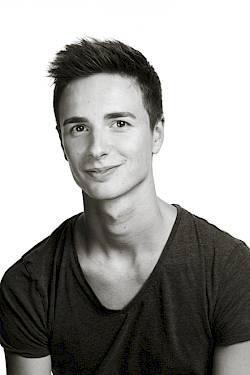
Jan Casier,
Jan Casier
Jan Casier was born in Belgium. He studied at the Royal Ballet School in Antwerp. From 2008 to 2012 he was a member of the Royal Ballet of Flanders where he danced in ballets by John Cranko, William Forsythe, David Dawson and Christian Spuck. He appeared in David Dawson’s Faun(e) as a guest at the English National Ballet. From 2012 to 2014 he was a member of Ballett Zürich, where he performed roles in numerous Christian Spuck ballets, including Leonce in Leonce und Lena, Paris in Romeo und Julia and the title role of Woyzeck. He also danced in choreographies by Edward Clug, Sol León/Paul Lightfoot, Marco Goecke and Wayne McGregor. From 2014 to 2016 he was a member of the Semperoper Ballett Dresden. There he performed in choreographies by Aaron Watkins (Prince in The Nutcracker), William Forsythe, Alexei Ratmansky, David Dawson and Alexander Ekman. Jan Casier returned to Ballett Zürich in 2016. Since his return, he has danced in Forsythe’s Quintett, Godani’s rituals from another when and the title role in Edward Clug’s Faust and Marco Goecke’s Nijinski. He also appeared as Drosselmeier in Christian Spuck’s Nussknacker und Mausekönig. In 2019, he was named «Dancer of the Year» by the «tanz» magazine and was awarded the «Tanzpreis der Freunde des Balletts Zürich».

Esteban Berlanga,
Esteban Berlanga
Esteban Berlanga comes from Spain. After his training at the Royal Conservatory of Albacete and the Professional Dance Conservatory of Madrid, he danced at the English National Ballet from 2006 to 2013, where he was appointed principal dancer in 2012. Here he appeared as Prince Siegfried in Schwanensee by Derek Dean, the Prince in Kenneth MacMillan’s Dornröschen, Albrecht in Giselle by Mary Skeaping, the Nutcracker in the choreography by Wayne Eagling and Frédéric in L’Arlésienne by Roland Petit, among others. He also appeared in choreographies by Jiří Kylián and Maurice Béjart. He was nominated for the «Prix Benois de la Danse» for Faun(e) by David Dawson. He was principal dancer in the Compañia Nacional de Danza España from 2013-2018. There he performed as a soloist in choreographies by William Forsythe, Itzik Galili, Roland Petit, Aleix Mañé and Kenneth MacMillan. He has appeared with the English National Ballet, the Australian Ballet, the Nariko Kobayashi Ballet, and the Carmen Cortès Flamenco Company. He has been a member of Ballett Zürich since the 2018/19 season, where he has performed in Christian Spuck’s Winterreise and in the title role of Marco Goecke’s Nijinski.

Katja Wünsche,
Katja Wünsche
Katja Wünsche comes from Dresden and was trained at the Staatliche Ballettschule Berlin. She has won prizes at numerous ballet competitions. From 1999 to 2012 she danced in the Stuttgart Ballet, including as a principal dance from 2006. She danced leading roles in choreographies by John Cranko (Romeo und Julia, Der Widerspenstigen Zähmung, Onegin), John Neumeier (Endstation Sehnsucht, Die Kameliendame), Marcia Haydée (Dornröschen, La Sylphide, La fille mal gardée) and Christian Spuck (Lulu, Der Sandmann, Leonce und Lena, Das Fräulein von S.) and ballets by Forsythe, Kylián, León/Lightfoot and Goecke. In 2007 she was awarded the German Dance Prize Future (for promising young artists) and the German Theater Prize Der Faust. Katja Wünsche has been a first soloist with Ballett Zürich since the 2012/13 season. She has been seen in Zurich as Julia in Spuck’s Romeo und Julia, Lena in Leonce und Lena, Marie in Woyzeck, Anna Karenina and Kitty in Anna Karenina and Clara in Der Sandmann. She has also performed in choreographies by Sol León/Paul Lightfoot, Douglas Lee, Martin Schläpfer, Wayne McGregor and Marco Goecke. In 2014 she was awarded the «Tanzpreis der Freunde des Balletts Zürich».
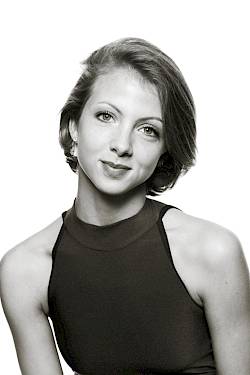
Michelle Willems,
Michelle Willems
Michelle Willems is French. She studied at the Bolshoi Ballet Academy and at the Atelier Rudra-Béjart in Lausanne. After two seasons with the Junior Ballett, she joined Ballett Zürich in the 2016/17 season. After solo roles in Giselle and Schwanensee, she danced Kitty in Christian Spuck’s Anna Karenina, Marie in Spuck’s Nussknacker und Mausekönig and Gretchen in Edward Clug’s Faust, and in Spuck’s Das Mädchen mit den Schwefelhölzern. She has also appeared in choreographies by William Forsythe, Jiří Kylián, Marco Goecke, Crystal Pite, George Balanchine, Ohad Naharin, Douglas Lee, and Filipe Portugal She was awarded the «Tanzpreis der Freunde des Balletts Zürich» in 2018.
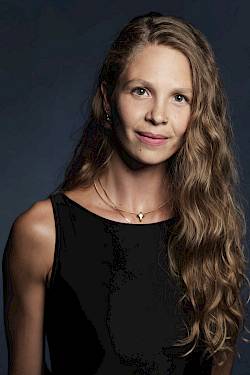
Francesca Dell'Aria,
Francesca Dell'Aria
Francesca Dell’Aria comes from Italy. She received her training at the Elmhurst School and the Birmingham Royal Ballet. After an engagement with the Slovak National Ballet, she was a member of the Bayerisches Staatsballett from 2010 to 2014. She has belonged to Ballett Zürich since the 2014/15 season and has appeared in choreographies by William Forsythe (New Sleep, workwithinwork, In the middle, The Second Detail), Jiří Kylián (Gods and Dogs, Falling Angels), George Balanchine, Hans van Manen (Kammerballett) Jacopo Godani, Douglas Lee, Edward Clug, Marco Goecke (Nijinski), and Crystal Pite. She also appeared in the title role of Christian Spuck’s Anna Karenina and as Myrtha in Patrice Bart’s Giselle. She was awarded with the «Tanzpreis der Freunde des Balletts Zürich» in 2019.

Daniel Mulligan,
Daniel Mulligan
Daniel Mulligan comes from Great Britain and studied at the Royal Ballet School in London. After two seasons with the Junior Ballett, he joined Ballett Zürich in the 2009/10 season. He has appeared as a soloist in many of Heinz Spoerli’s choreographies. He danced Mercutio/Benvolio in Christian Spuck’s Romeo und Julia as well as in ballets by Mats Ek (Dornröschen), Hans van Manen (Solo, Kammerballett), Edward Clug (Chamber Minds, Le Sacre du printemps), Sol León/Paul Lightfoot (Skew-Whiff, Speak for Yourself), William Forsythe (Quintett), Jiří Kylián (Gods and Dogs, Stepping Stones, Sweet Dreams), Ohad Naharin (Minus 16), Marco Goecke (Petruschka), Filipe Portugal (Corpus), Douglas Lee, and Crystal Pite. Recent leading roles have included Mephisto in Faust by Edward Clug, Fritz and the Clown in Spuck’s Nussknacker und Mausekönig, as well as Stiva in Spuck’s Anna Karenina.
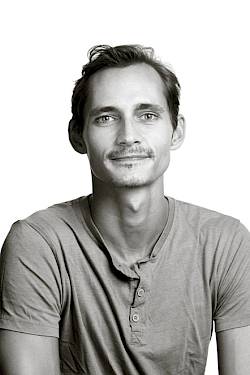
Dominik White Slavkovský,
Dominik White Slavkovský
Dominik White Slavkovský is Slovakian. Trained at the Bratislava Dance Conservatory, he danced for five years in the Ballet of the Slovak National Theater in Bratislava, most recently as a semi-soloist. He has been a member of Ballett Zürich since the 2014/15 season. In choreographies by Christian Spuck he performed the title role of "Woyzeck", as Drosselmeier in "Nutcracker and Mouse King", Coppelius in "The Sandman", Paris in "Romeo and Juliet" and as Death in Edward Clug's "Peer Gynt". He has also danced in choreographies by George Balanchine, Uwe Scholz, Alexei Ratmansky, Jiří Kylián, William Forsythe, Crystal Pite, Hans van Manen, Nacho Duato, Marco Goecke, James Kudelka, Vladimir Malakhov and many others. In the series "Young Choreographers" he showed his pieces "How to save the world", "Conspiracy" and "Boyband"
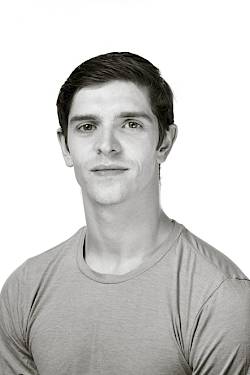
Matthew Knight,
Matthew Knight
Matthew Knight is British. He completed his training at the Elmhurst School and the Royal Ballet School in London. After a season with the Junior Ballett, he joined Ballett Zürich in the 2014/15 season. He presented Jane Doe and Mocambo as part of the «Junge Choreografen» series. He has danced in choreographies by Mats Ek (Cavalier in Dornröschen), William Forsythe, Marco Goecke (Moor in Petruschka), Jiří Kylián, Douglas Lee, Sol León/Paul Lightfoot, Hans van Manen, Wayne McGregor, Ohad Naharin, Crystal Pite, and Filipe Portugal. He was Leonce in Christian Spuck’s Leonce und Lena, Nathanael in Spuck’s Der Sandmann and the Clown in Spuck’s Nussknacker und Mausekönig. In 2018 he also appeared as the title roles in Edward Clug’s Faust and in Marco Goecke’s Nijinski. In 2016 he was awarded the «Tanzpreis der Freunde des Balletts Zürich».
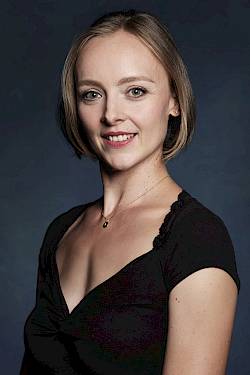
Mélanie Borel,
Mélanie Borel
Mélanie Borel comes from France. She studied at the École Nationale Supérieure de Danse in Marseille and at the École de Danse de l’Opéra de Paris. Engagements have taken her to the Ballet de l’Opéra National de Bordeaux and, from 2005 to 2008, to the Peter Schaufuss Ballet in Denmark. She has been a member of Ballett Zürich since the 2008/09 season and has performed as a soloist in choreographies by Twyla Tharp, Heinz Spoerli, and Mats Ek. She was the Haushofmeister in Spuck’s Leonce und Lena and danced the «Cholerisch» variation in Balanchine’s The Four Temperaments. In addition, she has appeared in choreographies by Marco Goecke, Douglas Lee, Jiří Kylián, Wayne McGregor, Martin Schläpfer, Hans van Manen, Edward Clug and Crystal Pite.
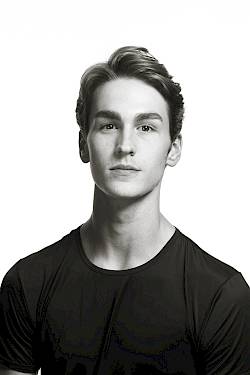
Cohen Aitchison-Dugas,
Cohen Aitchison-Dugas
Cohen Aitchison-Dugas is Canadian. He studied at the École Supérieure de Ballet du Québec and at the National Ballet School in Canada. In the 2015/16 season he danced in The Nutcracker with the Grands Ballets Canadiens. After two seasons with the Junior Ballett, he joined Ballett Zürich in the 2017/18 season. He has performed in Jacopo Godani’s rituals from another when, in Filipe Portugal’s Behind the mirror and danced the role of the Mouse King in Christian Spuck’s Nussknacker und Mausekönig, among others. He was awarded with the «Tanzpreis der Freunde des Balletts Zürich» in 2018.
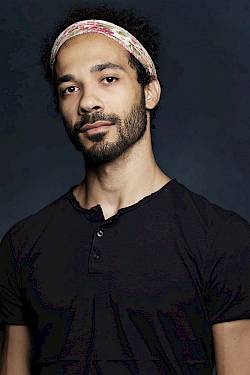
Lucas Valente,
Lucas Valente
Lucas Valente comes from Brazil. He studied performing arts and philosophy at the University of São Paulo. His first engagement was with the Ballet Company Laura Alonso in Havana and he was involved in the «Arsenale della Danza» project at the Venice Biennale in 2012. From 2012 to 2016 he danced in the São Paulo Companhia de Dança, where he appeared in choreographies by Edouard Lock, Marco Goecke, William Forsythe, Nacho Duato, and Jiří Kylián, among others. He danced in choreographies by Richard Siegal at the Ballet of Difference in 2017. He has been a member of Ballett Zürich since the 2017/18 season. He presented his choreography Trees Die Standing as a part of the «Junge Choreografen» series. He has appeared as Tybalt/Count Capulet in Christian Spuck’s Romeo und Julia and appeared in Crystal Pite’s Emergence.
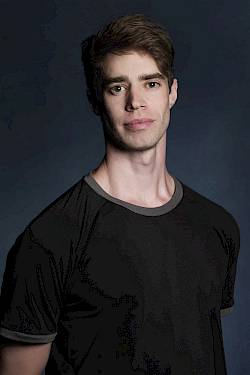
Jesse Fraser,
Jesse Fraser
Jesse Fraser was born in Saskatoon, Canada. He trained at the Royal Winnipeg Ballet School and became a member of the Stuttgart Ballet with the 2010/11 season. There he danced in choreographies by Cranko, MacMillan, Spuck, Haydée, Neumeier, Béjart, Forsythe, Cherkaoui, Goecke, Clug, Volpi, and Stiens. He created the choreographies Back and Forth and Second Self(ie) as a part of the «Young Choreographers» of the Noverre Society series. He has been a member of Ballett Zürich since the 2015/16 season. He has appeared as Paris in Christian Spuck’s Romeo und Julia, as Levin in Spuck’s Anna Karenina, as Hilarion in Patrice Bart’s Giselle, in Marco Goecke’s Petruschka and in choreographies by Jacopo Godani, Jiří Kylián, Hans van Manen, and Crystal Pite. In the 2019/20 season he appeared in Forsythe’s The Second Detail.

Emma Antrobus,
Emma Antrobus
Emma Antrobus comes from Australia. She studied at the Lamont Dance Theatre, at the Conlan College in Sydney and at the Ballett Akademie of the Hochschule für Musik und Theater in Munich. After two seasons with the Junior Ballett, she joined Ballett Zürich with the 2019/20 season. She danced in choreographies by Christian Spuck (including Das Mädchen mit den Schwefelhölzern), Edward Clug, Crystal Pite, and Ohad Naharin. In 2018, she was awarded the «Tanzpreis der Freunde des Balletts Zürich».
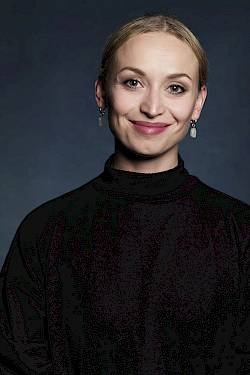
Irmina Kopaczynska,
Irmina Kopaczynska
Irmina Kopaczynska was born in Poland. She studied at the Polish National Ballet School Poznan. She won several prizes in the Polish National Ballet Competition. She also took part in the «Premio Roma» and the «Prix de Lausanne». After two seasons with the Junior Ballett, she became a member of Ballett Zürich starting with the 2011/12 season. She danced the Silver Fairy in Mats Ek’s Dornröschen, Betsy in Christian Spuck’s Anna Karenina, and the Nursemaid in Spuck’s Romeo und Julia. She has also appeared in choreographies by William Forsythe (In the middle, New Sleep), Hans van Manen (Kammerballett), Jiří Kylián (Gods and Dogs, Bella Figura), Iacopo Godani, Edward Clug, Marco Goecke (including the Mother in Nijinski), Douglas Lee, and Crystal Pite.

Wei Chen,
Wei Chen
Wei Chen comes from the USA and received his education at the Boston Ballet School, the Margo Marshall School of Ballet, the Walnut Hill School, and the Houston Ballet’s Ben Stevenson Academy. At the Royal Ballet of Flanders he danced in Marcia Haydées Schwanensee (Siegfried) and Dornröschen (Prince Desiré) as well as in Cranko’s Onegin (Lensky). He has also appeared in choreographies by Balanchine, Bournonville, Dawson, Forsythe, Godani, McGregor, Nureyev, Pite, Stevenson, and Wheeldon. He has been a member of Ballett Zürich since the 2013/14 season and has performed in choreographies by Douglas Lee, Jiří Kylián, Marco Goecke, Edward Clug, William Forsythe, and Crystal Pite, among others. He also danced Romeo and Mercutio in Spuck’s Romeo und Julia, Benno in Ratmansky’s Schwanensee, Coppelius in Spuck’s Der Sandmann, and Albrecht in Patrice Bart’s Giselle.
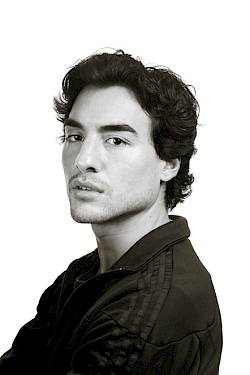
Kevin Pouzou,
Kevin Pouzou
Kevin Pouzou is French. He studied at the École de Danse de l’Opéra de Paris and at the Conservatoire National Supérieur de Musique et de Danse in Paris. In 2007 he became a member of the Staatsballett Berlin, where he was appointed principal dancer in 2015. He has performed as Benno in Patrice Bart’s Schwanensee, as Paris in John Cranko’s Romeo und Julia, as well as in choreographies by George Balanchine, Nacho Duato, Stanton Welch, Angelin Preljocaj, Alexei Ratmansky, Ohad Nahrin, Vladimir Malakhov, and Jiří Kylián. He has been a member of Ballett Zürich since the 2017/18 season, where he has appeared as Prince Siegfried in Alexei Ratmansky’s Schwanensee, Diaghilev in Marco Goecke’s Nijinski, and Albrecht in Patrice Bart’s Giselle.

Aurore Aleman Lissitzky,
Aurore Aleman Lissitzky
Aurore Aleman Lissitzky comes from France. She received her training with Monique Loudières, at the Académie Princesse Grace in Monte-Carlo and at the Hamburg Ballet School. In 2008 she won the gold medal at the Concours International de Grasse. At the age of 16 she became a member of the Hamburg Ballet and danced solos in numerous choreographies by John Neumeier. After half a season in the Junior Ballet, she joined the Ballett Zürich in the 2017/18 season. She danced solos in choreographies by Christian Spuck, Edward Clug, Johann Inger, Jiří Kyliáns (Stepping Stones) as well as in Patrice Bart (Peasant Pas-de-deux in Giselle) and William Forsythe (The Second Detail).
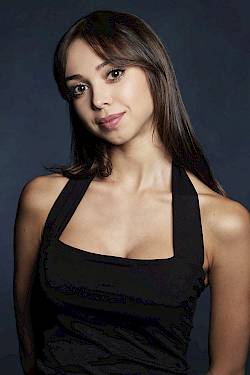
Greta Calzuola,
Greta Calzuola
Greta Calzuola is Italian. She completed her training at the ballet school of the Umbria Ballet in Italy and at the Académie Princesse Grace in Monte Carlo. She won the International Ballet Competition in Longiano in 2014. This is her second season as a member of the Junior Ballett.

Inna Bilash,
Inna Bilash
Inna Bilash comes from Ukraine. She studied ballet at the Kharkov Choreographic School, the Perm State Choreographic College and the Perm State Academy of Arts and Culture. She was a principal dancer in the Perm Ballet, where she appeared as Julia in Kenneth MacMillan’s Romeo und Julia, Odette/Odile in Natalia Makorova’s Schwanensee, Giselle in the choreography of Perrot/Coralli/Petipa, the Bride in Kylián’s Les Noces and Masha in MacMillan’s Winter Dreams. She has also appeared as a soloist in choreographies by Jerome Robbins, George Balanchine and Douglas Lee. She won the Arabesque Competition in Perm and the Bolshoi Ballet Television Competition. In 2017 she was awarded the prize from the ballet magazine «The Soul of Dance». Inna Bilash has been a member of Ballett Zürich since the 2018/19 season and has appeared in a variety of roles, including as the title role in Patrice Bart’s Giselle.
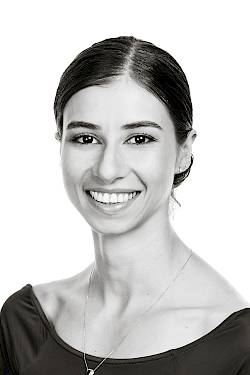
Rafaelle Queiroz,
Rafaelle Queiroz
Rafaelle Queiroz is from Brazil. She received her training in Rio de Janeiro and, with a stipend from the Tanzstiftung Birgit Keil, at the Akademie des Tanzes in Mannheim. She was a finalist at the «Prix de Lausanne» and won the Langham Award at the Youth American Grand Prix 2009. She was a member of the Badisches Staatsballett Karlsruhe from 2009 to 2019, where roles included Odette/Odile in Schwanensee by Christopher Wheeldon, Myrtha in Giselle by Peter Wright, the title role in La Sylphide by Peter Schaufuss, Katharina/Bianca in Cranko’s Der Widerspenstigen Zähmung, Julia in Kenneth MacMillan’s Romeo und Julia, and the title role in Rusalka von Jiří Bubeníček. In addition, she appeared in choreographies by Hans van Manen, Heinz Spoerli, Davide Bombana and Reginaldo Oliveira. She joined Ballett Zürich with the 2019/20 season.
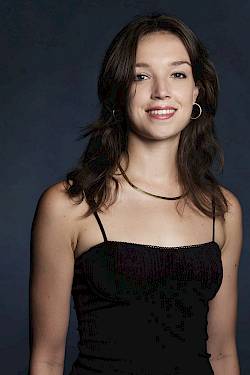
Chandler Hammond,
Chandler Hammond
Chandler Hammond comes from the USA. She was educated at the Patel Conservatory and at the John Cranko School in Stuttgart. She performed in Schwanensee, Jeu de cartes and Dornröschen with the Stuttgart Ballet. In 2014 she won the grand prize at the «Star of the 21st Century» competition. After two seasons as a member of the Junior Ballett, she joined Ballett Zürich with this season. She has appeared in choreographies by William Forsythe, Jiří Kylián, Goyo Montero, Louis Stiens, and Filipe Portugal.
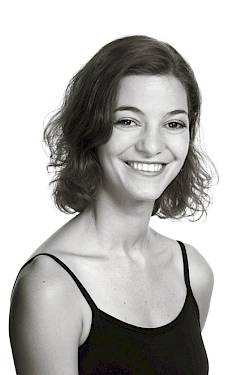
Mélissa Ligurgo,
Mélissa Ligurgo
Mélissa Ligurgo comes from Belgium and studied at the Royal Ballet School in Antwerp. She danced in John Cranko’s Onegin (Tatiana), as well as in ballets by Forsythe, Kylián, Dawson, and Robbins, at the Royal Ballet of Flanders. She appeared in Preljocaj’s Romeo und Julia (Julia) at the Ballett Basel in the 2011/12 season. She has been a member of Ballett Zürich since the 2012/13 season, where has danced Lena in Leonce und Lena by Christian Spuck and Frau Mauserinks in Nussknacker und Mausekönig. She has also appeared in choreographies by Wayne McGregor and Douglas Lee. As part of the «Junge Choreografen» series she presented Mind Games and Klastos together with Giulia Tonelli as well as Individuo.
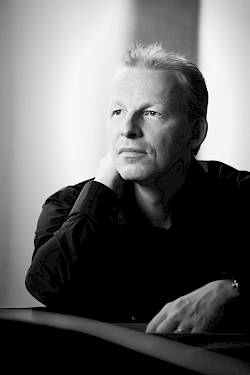
Adrian Oetiker,
Adrian Oetiker
Der Schweizer Pianist Adrian Oetiker verfolgt seit vielen Jahren eine weltweite Karriere. Er studierte er in der Meisterklasse von Homero Francesch an der Zürcher Hochschule der Künste und bei Bella Davidovich an der Juilliard School in New York. Auch Lazar Berman zählte zu seinen Lehrern. 1995 gewann er den ARD-Wettbewerb in München. Konzerte in Europa, Amerika und Australien führten ihn mit vielen Orchestern zusammen, darunter das Tonhalle-Orchester Zürich, das Symphonie-Orchester des Bayerischen Rundfunks, die Staatskapelle Dresden, das Irish National Symphony Orchestra und das Melbourne Symphony Orchestra. Bei wiederholten Einladungen nach Australien trat er mit den meisten Orchestern des Kontinents auf. Mit dem Orchestre Symphonique de Mulhouse unter Daniel Klajner spielte er von 2006 bis 2008 alle Klavierkonzerte von Béla Bartók. Rezitals und Kammermusik-Programme spielte er u.a. in der Berliner Philharmonie, im Gewandhaus Leipzig, im Festspielhaus Salzburg, im KKL und im Teatro La Fenice in Venedig. Er musiziert regelmässig im Klavierduo Paola & Adrian Oetiker und ist Pianist im Feininger Trio der Berliner Philharmoniker. Mehrere Ballettproduktionen am Opernhaus Zürich, an der Semperoper Dresden, an der Bayerischen Staatsoper und an der Deutschen Oper Berlin, u.a. mit Christian Spuck, runden seine vielfältigen Tätigkeiten ab. Adrian Oetiker ist Künstlerischer Leiter der Internationalen Sommerakademie Ettal und war von 1996 bis 2021 Professor für Klavier an der Hochschule für Musik Basel. 2011 wurde er als Professor an die Hochschule für Musik und Theater in München berufen.


